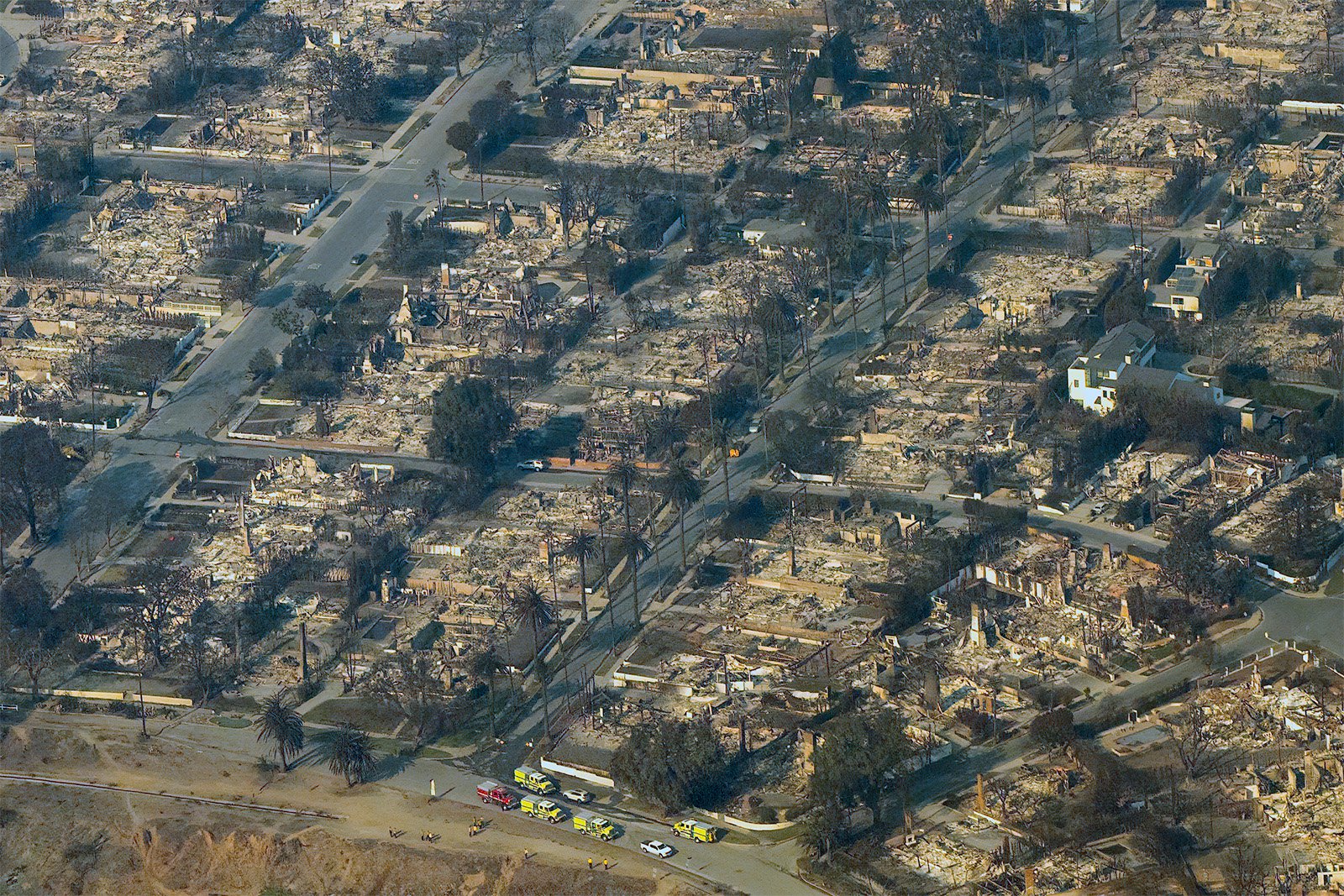
The Pacific Palisades Fire is one of the most devastating wildfires in the history of Los Angeles County. It scorched over 23,000 acres, stretching from the Santa Monica Mountains to the Pacific Ocean, and caused the destruction of more than 5,300 structures. The scale of the devastation was immense, leaving a significant mark, both physically and emotionally, on the landscape and communities in its path.
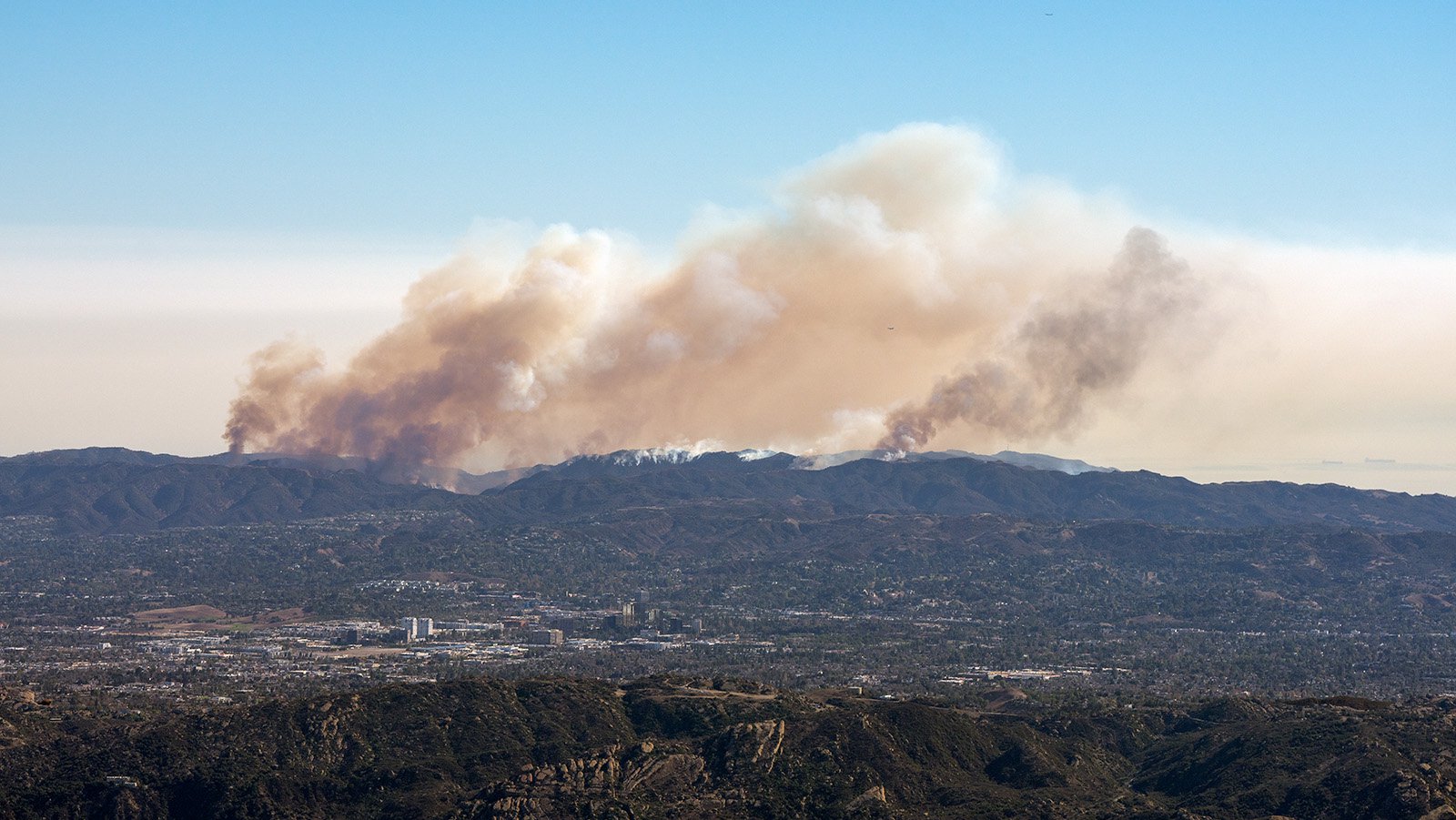
Aerial view from above Simi Valley captures the thick smoke rising from the Palisades Fire as it engulfs the Santa Monica Mountains.
What was the Palisades Fire?
The Palisades Fire stands as the fourth most destructive fire in the history of Los Angeles wildfires, consuming over 23,000 acres of land. The fire, which ravaged the Pacific Palisades and Eastern Malibu areas, destroyed over 5,300 buildings, including homes and schools, and left a trail of devastation in its wake. The rapid growth of the fire was fueled by unusually strong Santa Ana winds, which gusted up to 100 mph, complicating containment efforts and causing the fire to spread at an alarming rate.
The environmental conditions leading up to the fire were a perfect storm for disaster. After two unusually wet winters, the region experienced over six months without rain, creating tinderbox conditions which were very susceptible to wildfires. In such an low humidity environment, the fire initially grew from 10 acres to 200 acres in just 10 minutes, catching many off guard and underscoring the ferocity of the blaze.
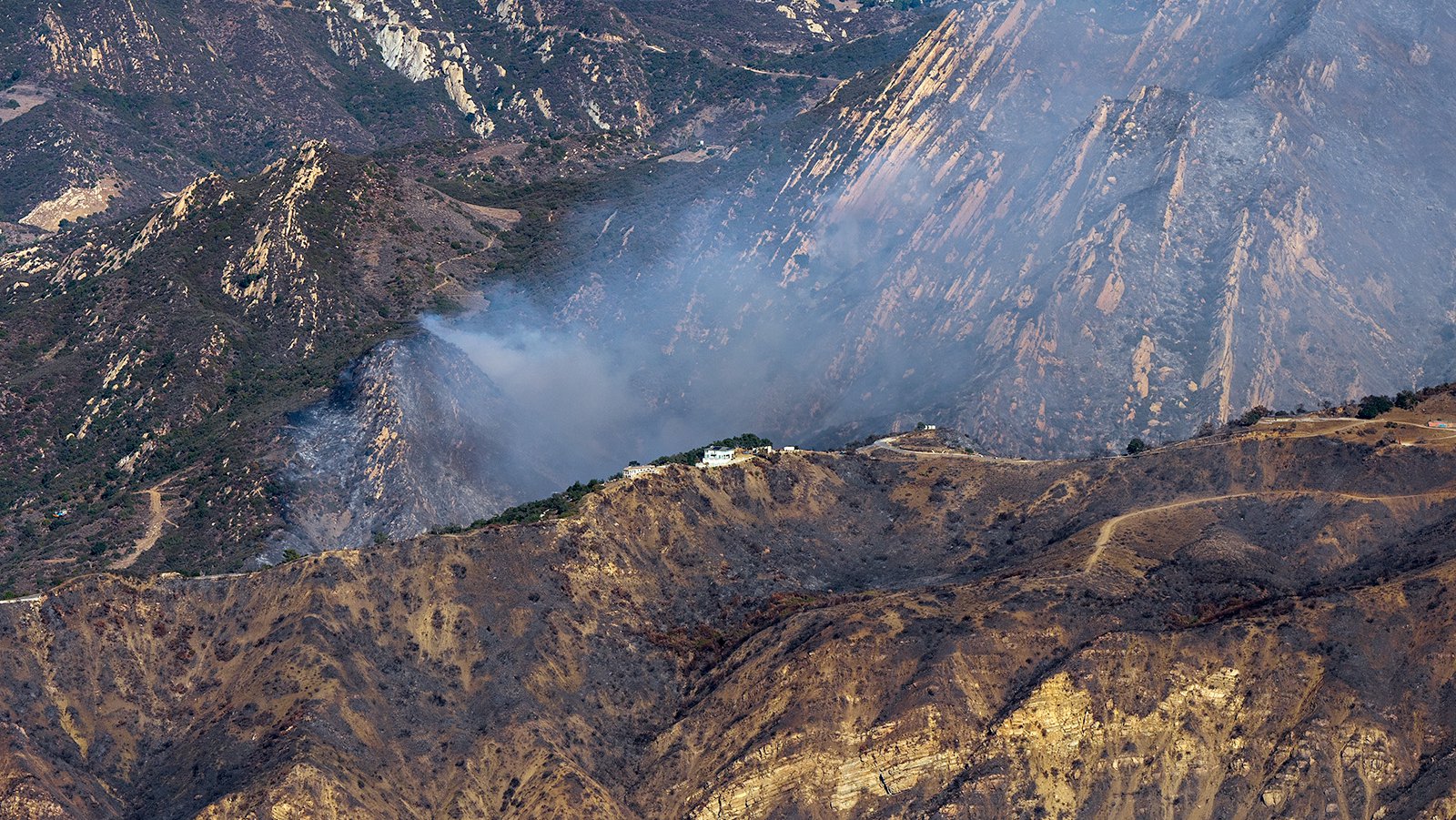
Smoke from the Palisades fire billows ominously from just behind houses nestled along the ridge line in the Santa Monica Mountains.
Fighting the Palisades Fire
Fighting the Palisades Fire demanded immense effort from firefighters and emergency personnel. Cal Fire, along with a multitude of county fire departments, coordinated a massive response that included aircraft and ground personnel from all over the world. Firefighters from Mexico, Canada, and even as far away as South Africa joined the battle against the blaze. The use of Canadian ‘Super Scooper’ firefighting aircraft was crucial, although one was damaged by a drone and grounded for a time, before later returning to service.
Evacuation warnings and orders were issued swiftly to ensure the safety of residents. The immediate threat posed by the fire necessitated prompt action, with evacuation zones being quickly established and enforced. Evacuation shelters were set up to provide refuge for those displaced, and disaster recovery centers offered resources and assistance to those affected by the wildfire. Communities and residents from across California were also instrumental, quickly filling donation centers and providing thousands of volunteers to help those impacted by blaze.
Firefighting efforts were not without challenges. The strong winds and dry conditions made fire suppression difficult, and red flag warnings issued by the National Weather Service highlighted the fire danger and made flying firefighting aircraft incredibly dangerous. Strengthening containment lines was a priority, and public safety power shutoffs were implemented to prevent any further ignitions.
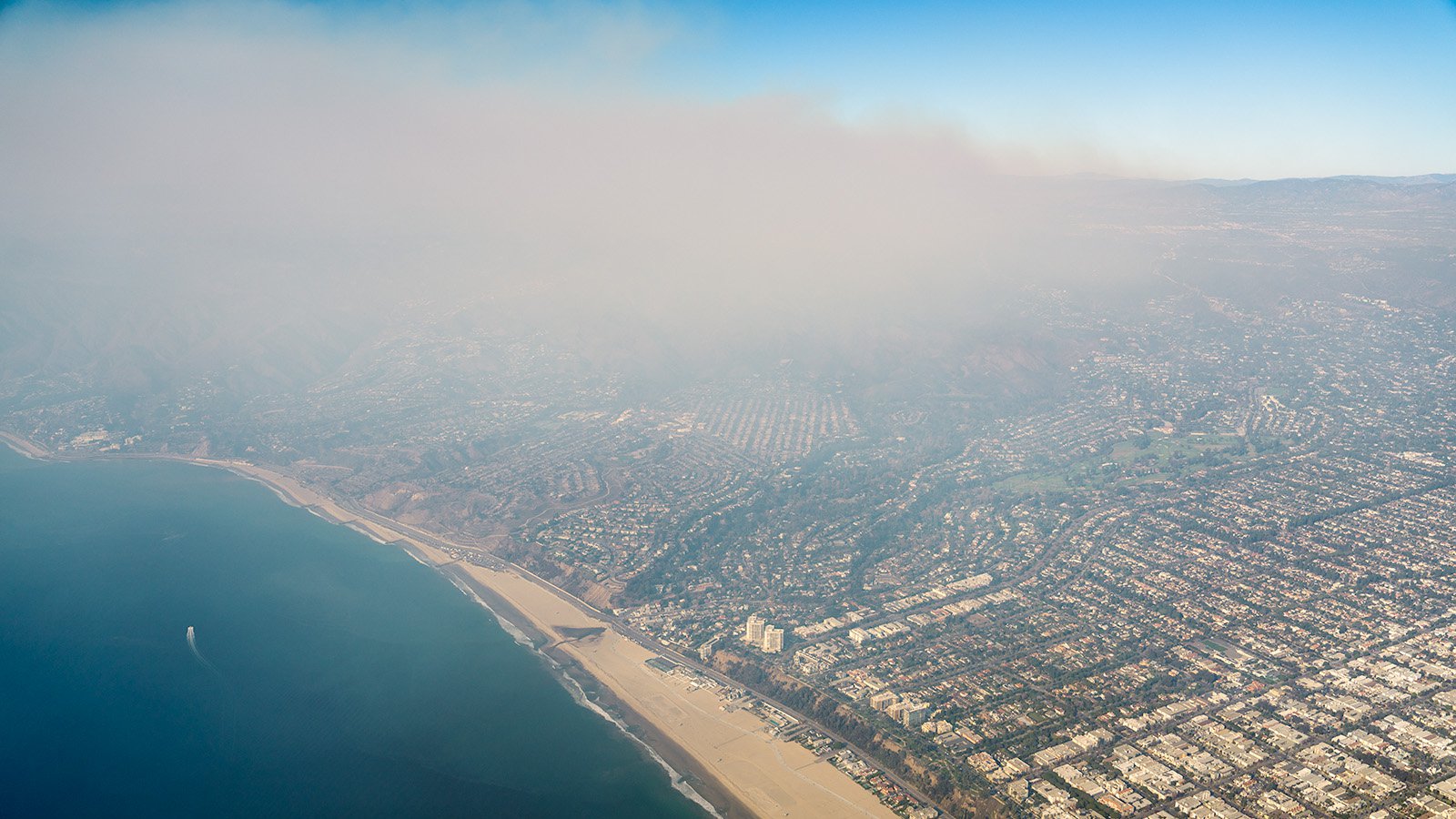
Aerial view of Santa Monica shrouded in smoke from the Palisades Fire, spreading toxic smoke across Los Angeles and creating an immediate threat to surrounding communities
Role of Weather Conditions
Weather conditions played a pivotal role in the behavior and spread of the Palisades Fire. The National Weather Service had issued a high wind warning for the days leading up to the fire, with wind gust speeds reaching nearly 100 mph in the mountains and 60 mph in the valleys and coastal areas of both Ventura and Los Angeles counties. These strong winds significantly increased the embers being blown into new areas, amplifying the fire’s spread.
The phenomenon known as ‘weather whiplash’ also intensified wildfire risks in the region. This term describes the abrupt changes in weather patterns, such as the shift from unusually wet winters to prolonged dry spells, which created highly flammable conditions. The dryness of the air and the strong winds are critical factors influencing fire risk level.
Areas Affected by the Palisades Wildfire
The Palisades Fire burned over 23,000 acres, affecting a vast range of areas from the tops of the Santa Monica mountains all the way down to the Pacific Ocean. Many communities were nearly completely destroyed. The wildfire did not discriminate what it burned, with the fire zone encompassing residential neighborhoods, commercial areas, and natural landscapes.
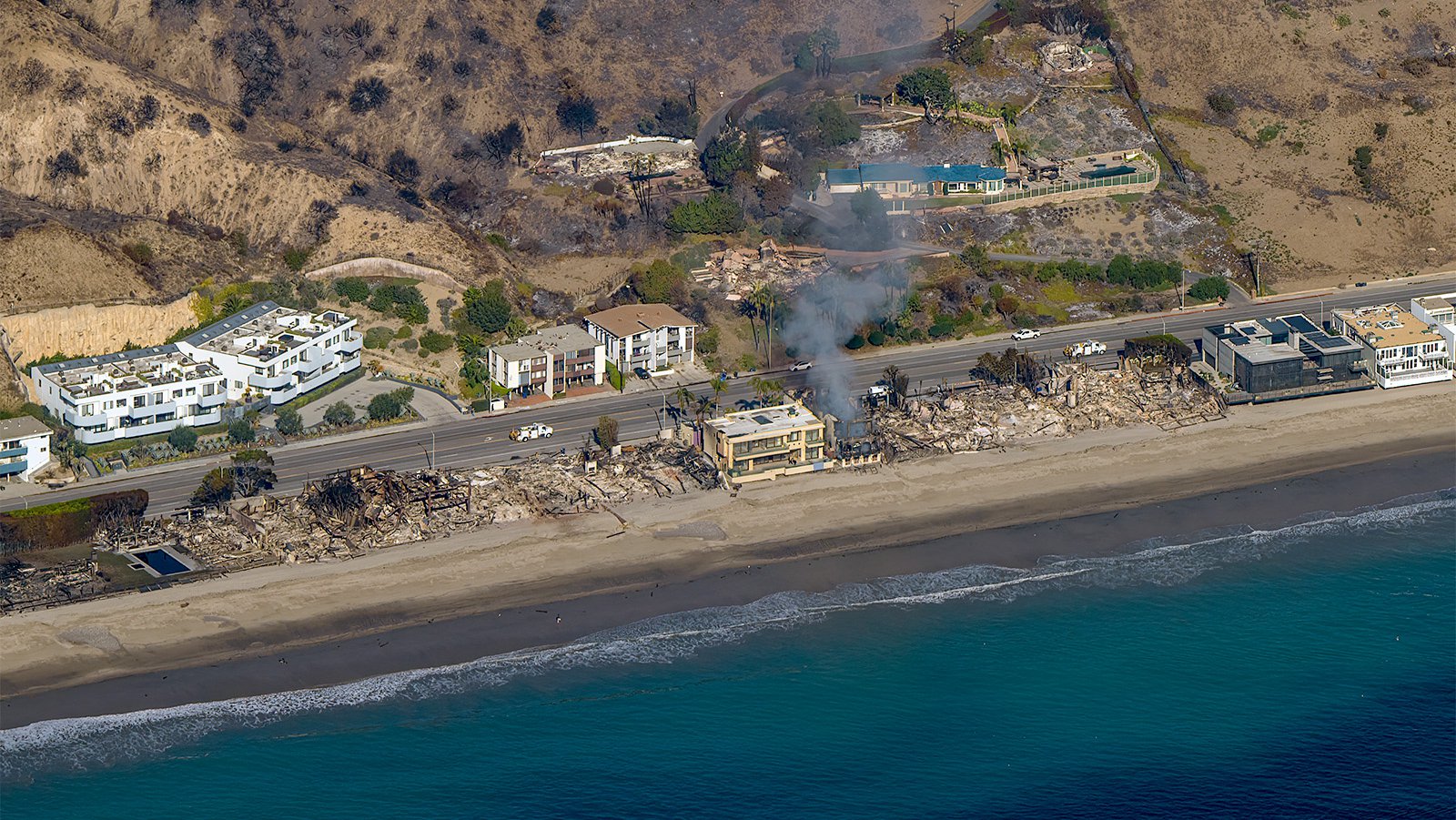
Devastation along the Pacific Coast Highway near Carbon Canyon Road in Eastern Malibu, where the charred remains of beachfront homes emit smoke after being ravaged by the Palisades wildfire..
Eastern Malibu
Eastern Malibu, a mix of rustic tiny village and flashy hideaway and known for its surfing and celebrity residents, faced significant destruction by to the Palisades Fire. A third of Eastern Malibu was destroyed with entire neighborhoods reduced to ashes, including the communities of Big Rock and Carbon Mesa, and a famed stretch of the Pacific Coast Highway.
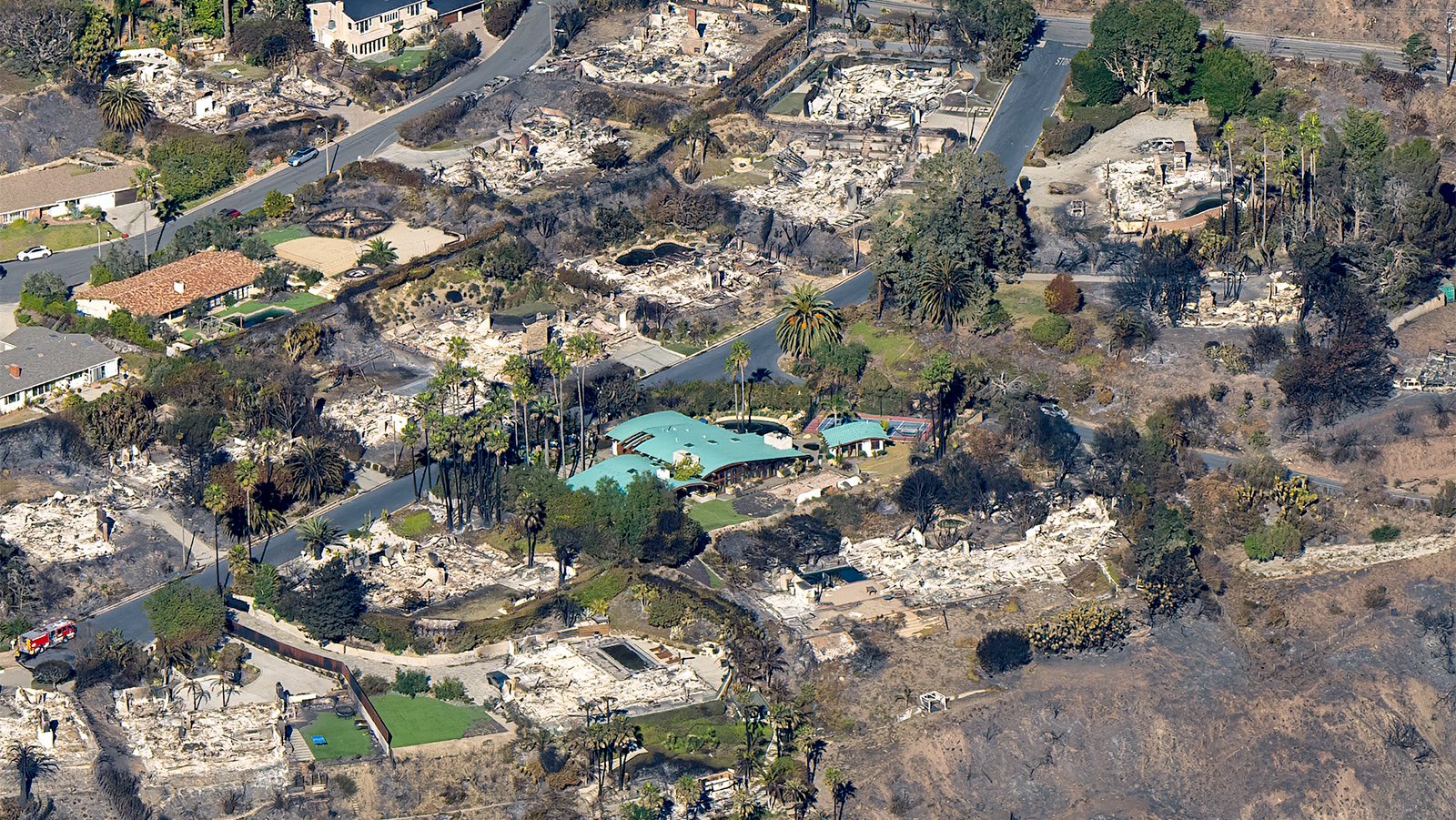
Aerial view of the Big Rock bluffs in Eastern Malibu, with charred and destroyed homes showing the Palisades fire's merciless path through this once picturesque bluffside neighborhood.
Big Rock
Big Rock Beach, a narrow rocky beach in Malibu, saw significant loss of homes due to the fire. The area, named for the big rock just offshore, features homes that sit level with the Pacific Coast Highway and as well as many in the hills high above the rocky beach.
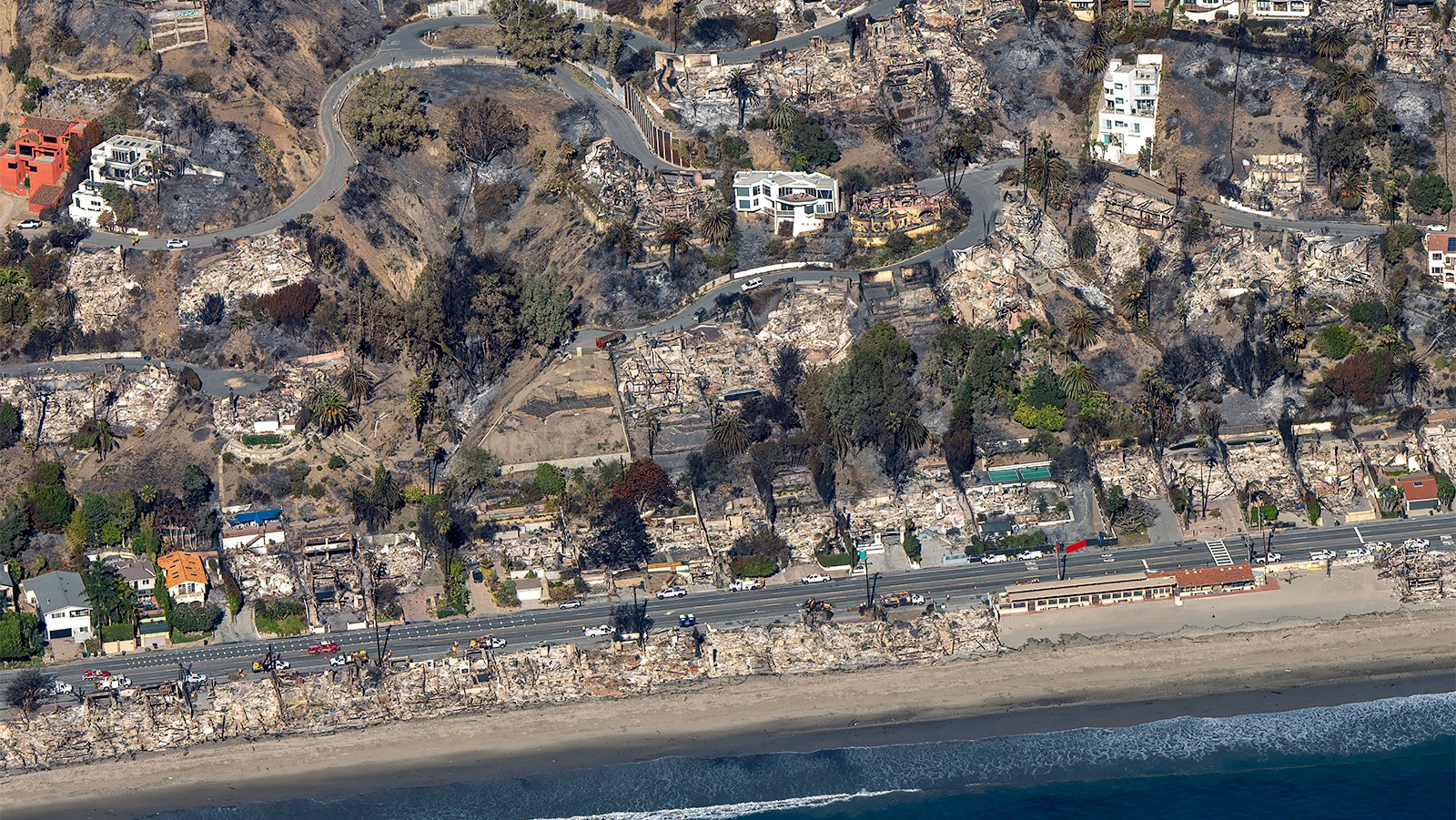
Carbon Mesa burn area reveals a stark contrast between completely burned and intact homes on the bluffs overlooking the Pacific Coast Highway, where the beachfront residences had been entirely destroyed by the Palisades Fire.
Carbon Mesa
The hillside community of Carbon Mesa faced extensive damage during the Palisades Fire. Situated on the hills of Eastern Malibu, west of Carbon Canyon, Carbon Mesa is only accessible via the Pacific Coast Highway or Carbon Canyon Road, leaving little time for residents to safely evacuate as the wildfire spread. The fire’s destruction in this area was profound, with numerous homes lost and the community’s landscape forever changed.
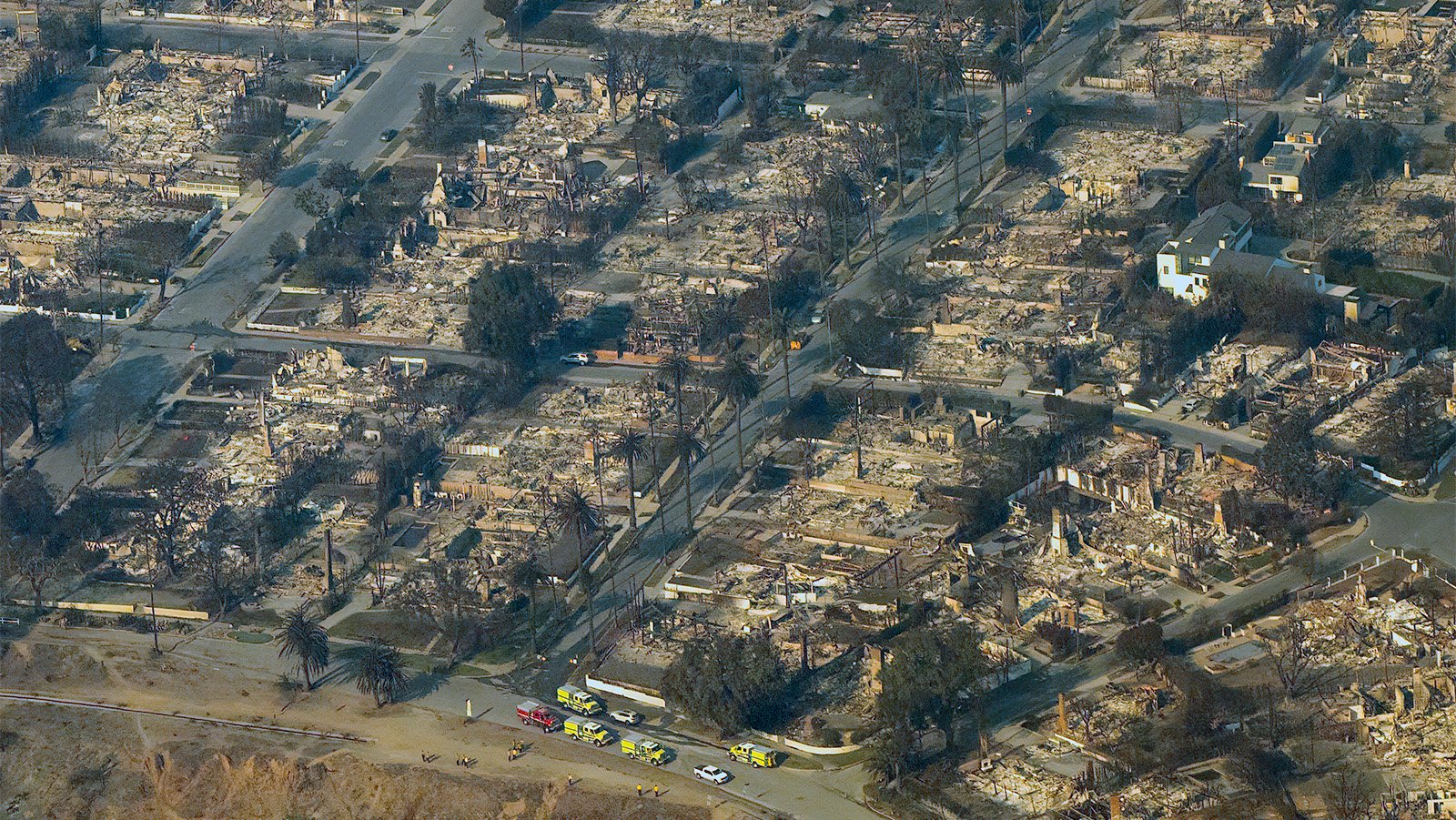
Aerial photo capturing the haunting aftermath of the Palisades Fire, revealing the near-total destruction of a Pacific Palisades community.
Pacific Palisades
The affluent neighborhood of Pacific Palisades, nestled between the Santa Monica Mountains and the Pacific Ocean, was significantly impacted by the wildfire. The fire’s reach extended to several key areas, including Castellammare, The Getty Villa, Rustic Canyon, and Palisades Village.
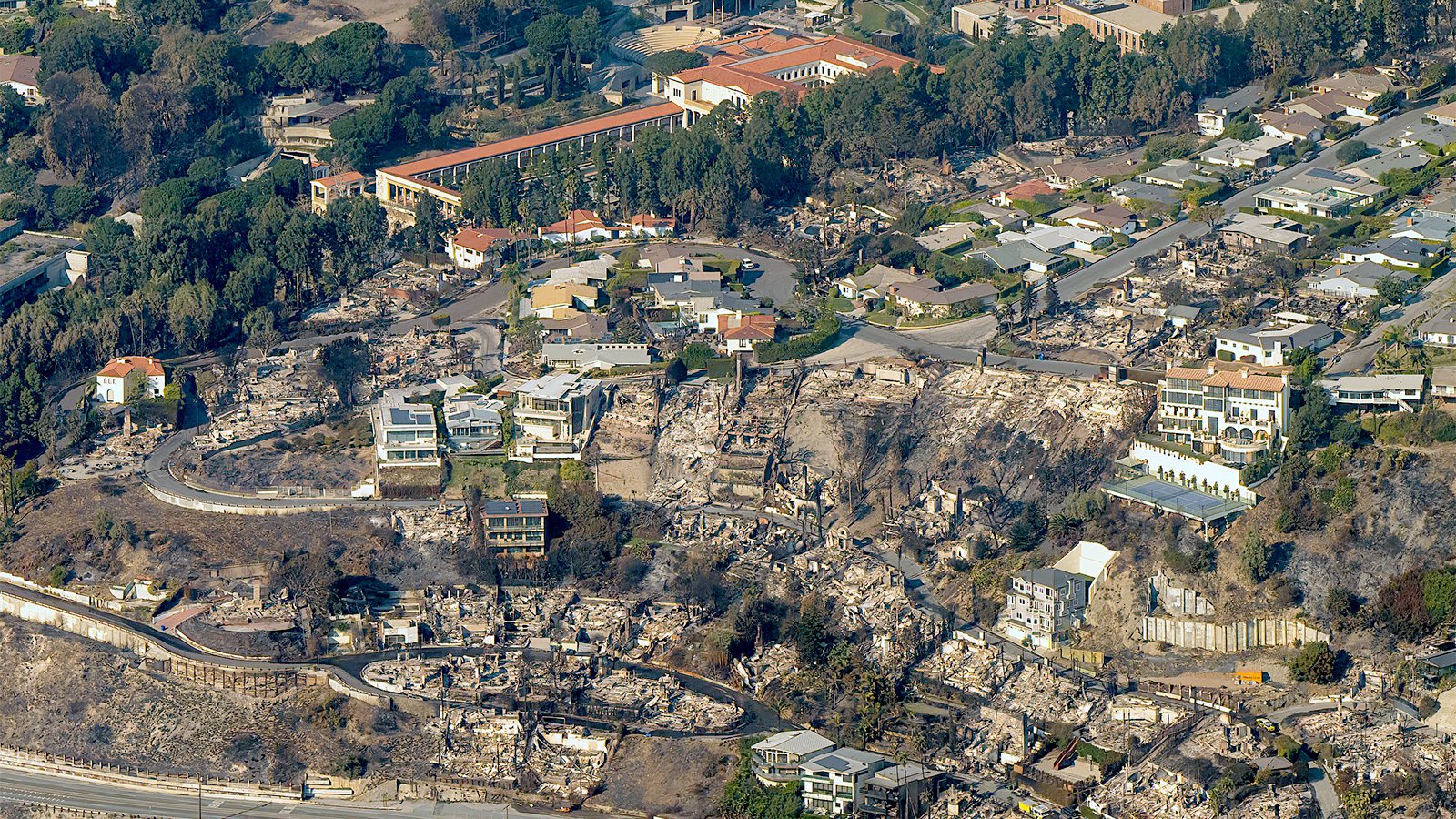
Aerial photograph capturing the charred landscape of the Castellammare community, located just east of the Getty Villa. Once-vibrant homes and lush greenery have been reduced to ashes, illustrating the fire's relentless path through this picturesque Pacific Palisades neighborhood.
Castellammare
Castellammare, a peaceful and beautiful neighborhood in Pacific Palisades and known for its stunning ocean views and beach access, suffered significant damage during the Palisades Fire. The community, located on the coastal slopes west of Santa Ynez Canyon and just south of Los Leones Canyon, was quickly engulfed as the Santa Ana winds carried the flames south towards the beaches.
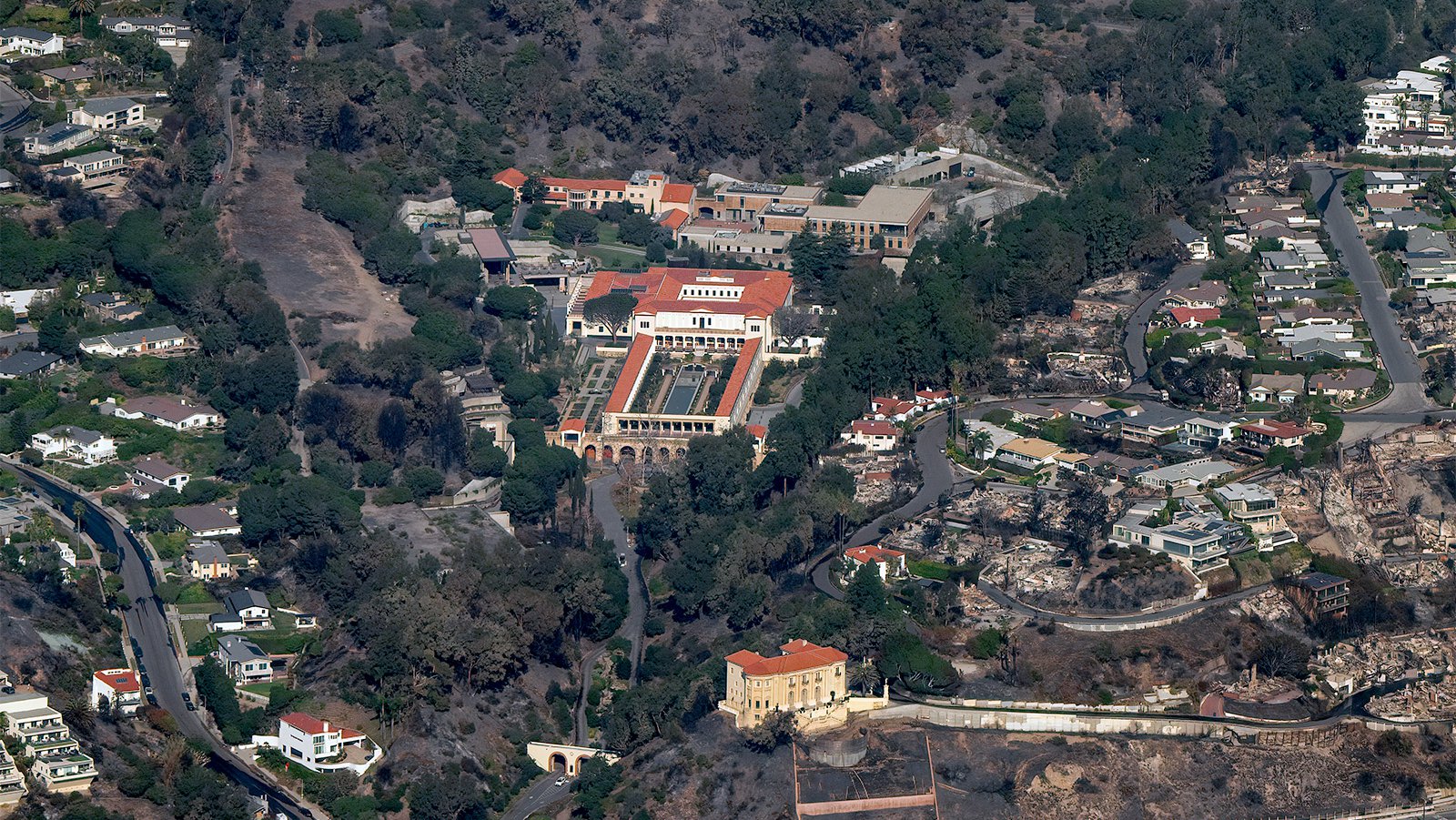
The Getty Villa stands resilient amidst the devastation caused by the Palisades fire. The surrounding communities are heavily burned, but despite the damage to its grounds, the Villa's art collection remained safe.
The Getty Villa
The Getty Villa, an educational center and art museum dedicated to the arts and cultures of ancient Greece, Rome, and Etruria, sustained ground damage from the fire, but the art collection remained safe. The museum remained closed until further notice in the immediate wake of the fire, as efforts to restore and secure the site continued.
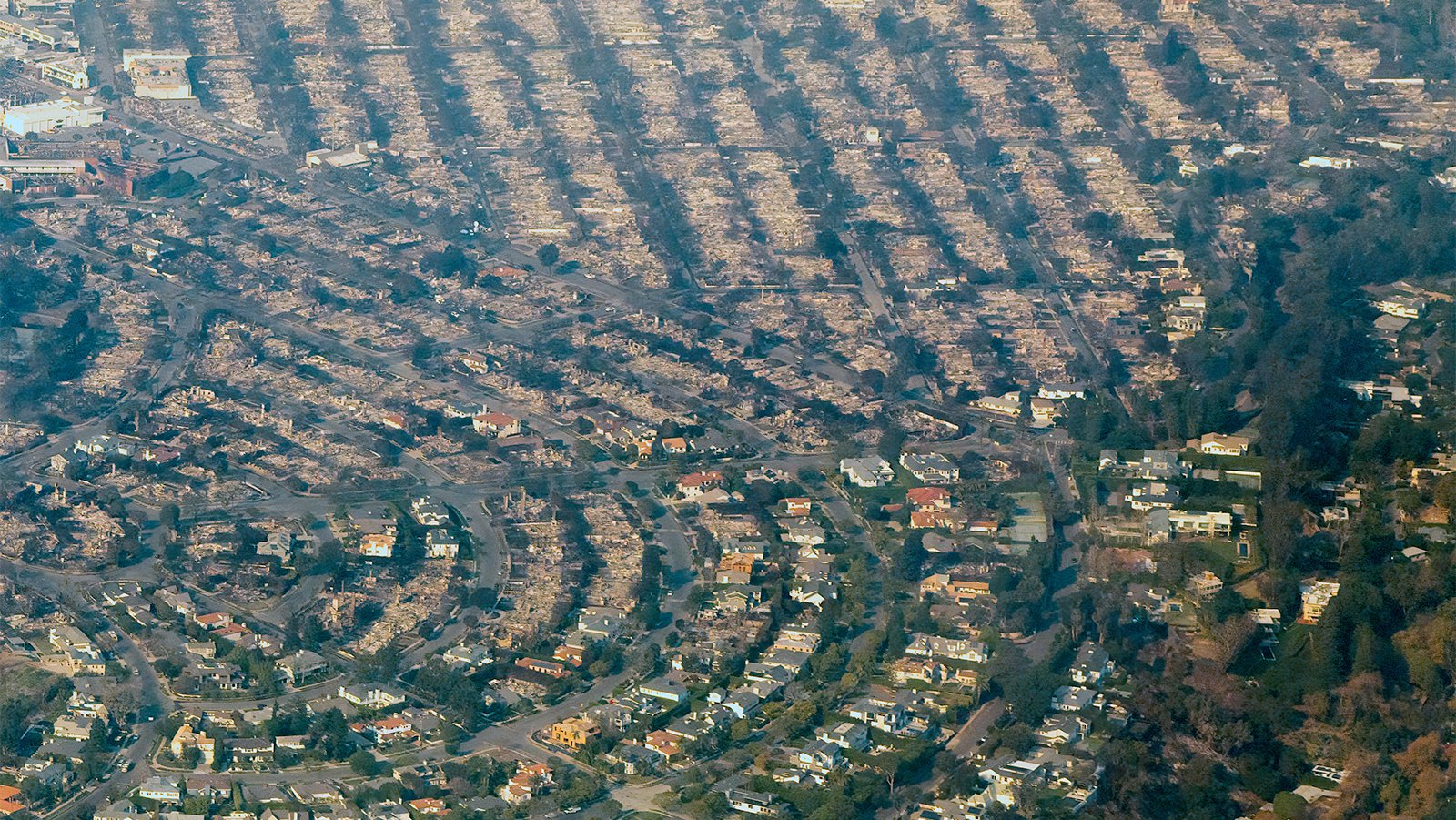
Aerial view of Rustic Canyon reveals the extensive damage caused by the Palisades Fire, where charred remains of homes contrast with the surviving lush landscape.
Rustic Canyon
Rustic Canyon, a residential neighborhood nestled along Rustic Creek in the Santa Monica Mountains, suffered significant destruction. Initial reports indicate that at least 500 homes were destroyed, marking an unprecedented level of devastation for the community.
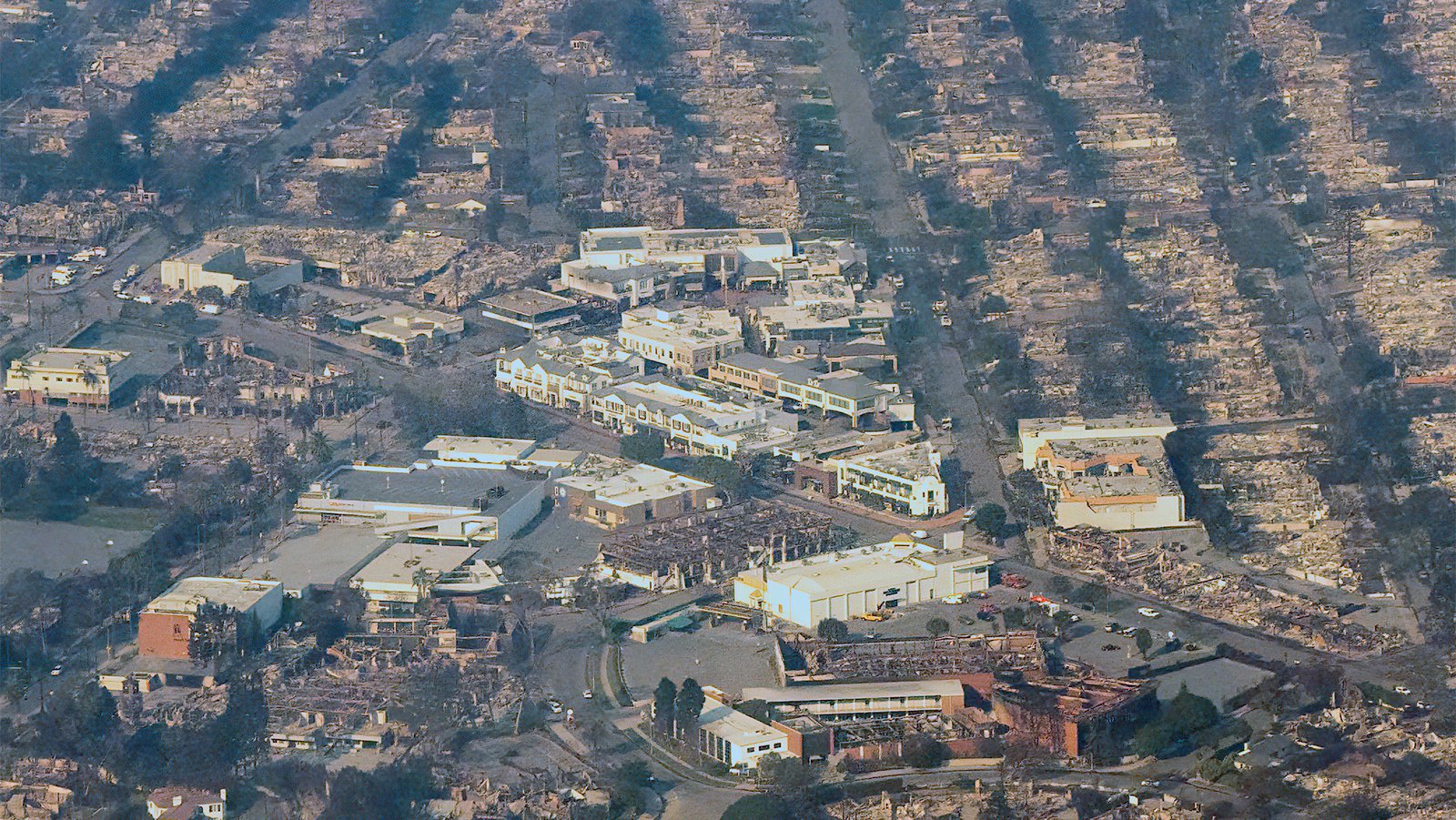
Palisades Village survives amidst the widespread devastation of neighboring communities.
Palisades Village
Palisades Village, an outdoor shopping center designed to evoke the charm of a classic American main street, was safeguarded by its owner, billionaire developer Rick Caruso, who employed private firefighters and water tankers to protect the mall from the advancing flames. Although the use of private firefighting services has stirred some controversy, as it diverts resources from protecting individual homes and isn't a service accessible to most people, these efforts were crucial in preserving the Village from sharing the same fate as the surrounding communities.
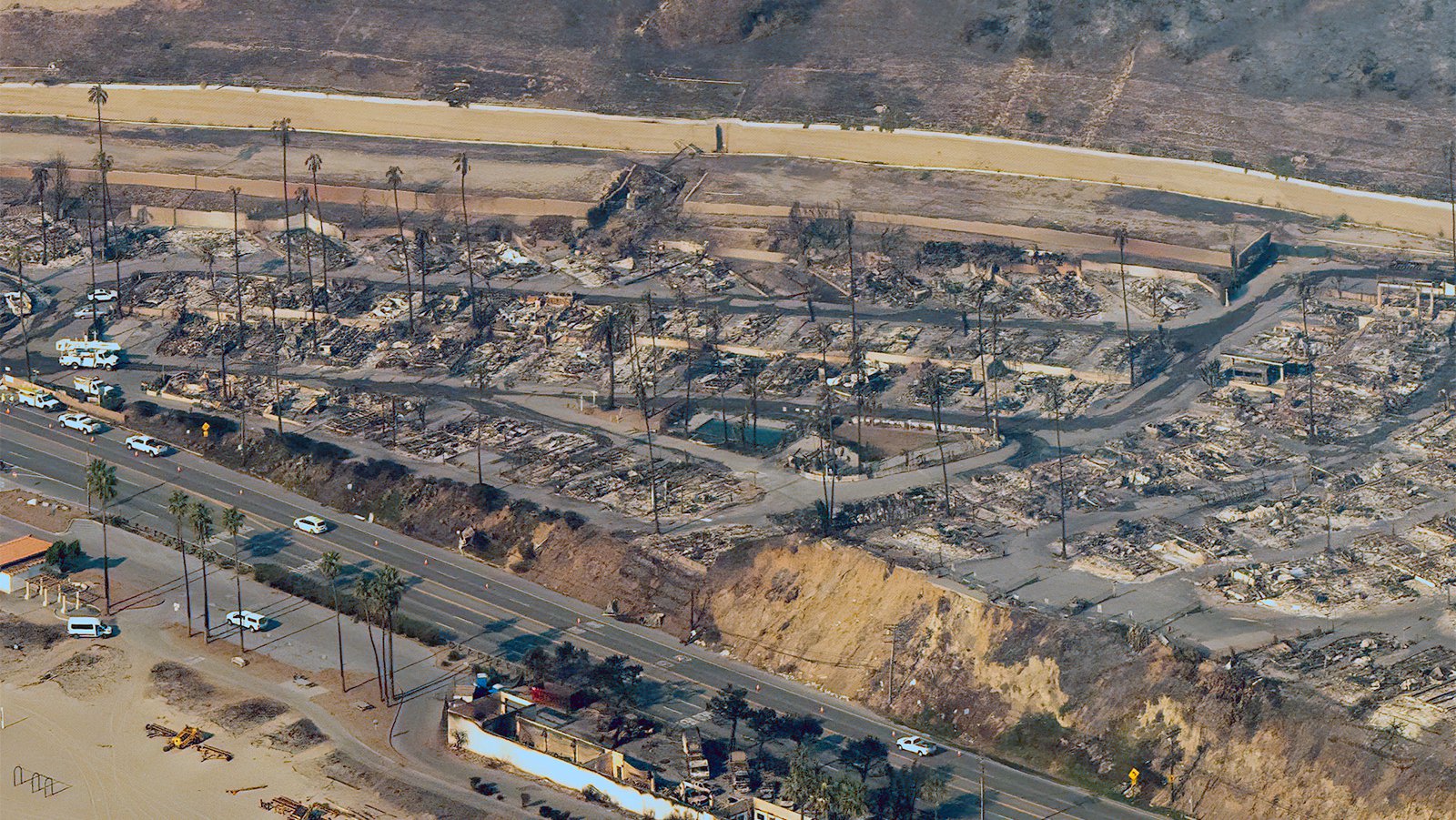
An aerial view of the Palisades Bowl Mobile Estates reveals the complete devastation caused by the Palisades Fire, with charred remains of mobile homes scattered across the landscape.
Palisades Bowl Mobile Estates
The Palisades Bowl Mobile Estates community, faced complete devastation during the Palisades Fire. This community, known for its close-knit residents and scenic views, was entirely engulfed by the flames, leaving nothing but charred remnants in its wake.

Cleanup crews have begun clearing parcels throughout Pacific Palisades two months after the destructive Palisades Fire burned through the community.
Recovery Efforts Two Months Later
Two months after the devastating Palisades Fire, recovery efforts across the burn areas in Malibu and Pacific Palisades are underway, though the landscape remains a stark reminder of the destructive force of the wildfire. In some areas, parcels have already been cleared of debris and are being prepared for new construction. These initial steps towards rebuilding signal a hopeful future for the affected communities.
However, many properties still lie in ruins, with ashes and charred remnants serving as a haunting testament to the fire's impact. The rebuilding process has not yet commenced, but optimism is in the air as plans are being formulated to restore these neighborhoods.

Close-up aerial view of construction crews clearing the remnants of a burned home from a parcel in Pacific Palisades. Surrounding homes remain uncleared, with little more than chimneys and ash surviving the Palisades Fire.
The Palisades Fire has left an indelible mark on the communities of Southern California. The fire’s rapid spread, fueled by strong Santa Ana winds and exacerbated by dry conditions, resulted in extensive destruction across the area. From the loss of thousands of buildings to the heroic efforts of firefighters from around the world, the Palisades Fire underscores the growing threat of wildfires in the region and the communal efforts required to recover from such disasters.